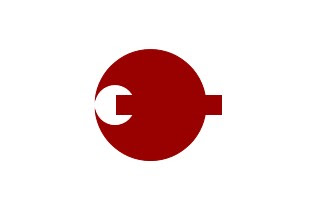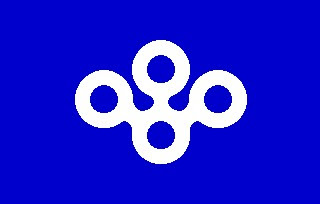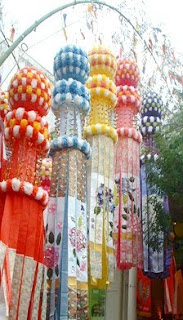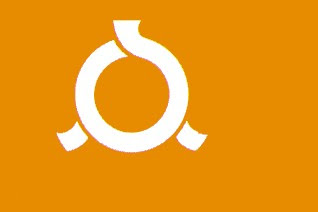Flag of Nara

The prefecturual Flag of Nara and Okinawa are what I can fraternal flag twins. They are a similar in design - both having a white background with a red circular symbol in the center. The essence of the national banner of Japan is strongly reflected with these two flags.
These places are culturally balanced like Yin and Yang. Nara is the ancient heartland and the original Imperial Capital of Japan. The original name of Nara during the Samurai and Shogun era was Yamato, which is also the classical name of Japan.
Flag of Okinawa

Nara's dark red icon is a stylized Katakana letter "Na" for NA-ra. The flag of Okinawa has a completed red disc but it is marked with a white circle. The two 'circles' are off center. This creates an accidental image as if an eye is looking up or north - towards Japan?
Okinawa basically is the national flag with an off center white Roman Letter "O". It is both ironic and harmonious that the part of Japan most influenced and impacted by the West uses a letter from the West in its flag.
So which flag looks more like the national flag of Japan? I guess it depends on your point of view. I believe it's a stone cold tie.
You can see the Flag of Japan 'hidden' in the flag of Nara & Okinawa

During World War II, the largest battleship of WWII was set to sea - the INJ Yamato. For the Japanese, this grandest ship of ships is kind'a like the HMS Titanic and USS Enterprise all in one. A generation later in the 1970s - the power of this ship would echo across American and Japanese Pop Culture, merging the line between History and Pop. American Generation-X'ers were exposed to Japanime called-Starblazers which was called Spaceship Yamato in Japanese.
Nara's Todai-Ji

Nara was once called Yamato long long ago, when the earth was in a different part of the galaxy, far far away. Nara Prefecture has many temples, shrines, and is considered historical and hallowed ground. Nara (Yamato) Prefecture is usually on the list of places to visit for every tourist, besides Kyoto and Tokyo.
Nara has historical political significance - being in the very heart of Japan but Okinawa is on the fringe. Okinawa was last part of Japan to be made a part Japan. Furthermore, it was added after the arrival European Explorers in 1534. Okinawa was obliged to bring tribute to both China and Japan in 1609. By 1609 the Japanese had mastered firearms technology brought over from the West - but ironically this weapons technology was originally designed by the Chinese who overlooked its potential as a weapon.
It wasn't until 1868 that Japan annexed Okinawa. After WWII the US held on to Okinawa for 20 extra years,until 1972, after the national occupation ended in 1952.
Battleship IJN Yamato
a proverbial HMS Titantic & USS Enterprise wrapped in one

But during the Great War of the Pacific Okinawa was hit hardest by the US Invasion force. Ironically the least or youngest part of Japan - paid the heaviest price in WWII. During the 3 month long Battle of Okinawa the IJN Yamato was positioned in between Okinawa and the Southern Mainland Island of Kyushu. Thus the IJN Yamato (or IJN Nara so to speak) was sunk while the Battle of Okinawa raged in the spring of 1945.
The flag of Okinawa and Nara were destined to be of a similar tone. They are essential parts of Japan but carry radically different histories. Nara is Japan, Nara is Yamato, Yamato is Japan, as is Okinawa.
Left - modern name - NIHON......Right - classical name - YAMATO
LEFT (SUN -SOURCE) literal translation of Kanji ( GRAND HARMONY) RIGHT
LEFT (SUN -SOURCE) literal translation of Kanji ( GRAND HARMONY) RIGHT

Okinawa is the proverbial Omega, and Nara is the Alpha of Japanese prefectures.
CLICK HERE FOR PART 6
CLICK HERE FOR PART 1
A song from Okinawa with American Influence
It became a hit in Latin America, soon one day in the US too
Click Here for Video about 'Japanese Twin Flags' on Youtube




















